|
The
state of
California
is a very special place for many people. Millions have come here from
other parts of the
United States
and from around the world to live, work, and prosper. And many of these
people embrace their new lives in this western state.
As the world's fifth largest economy,
California
has a great deal to offer the many people who make their way to the
Golden
State
in search of a better life.
My
name is Jennifer Vo and to me and my family,
California
is a very special place. This
may be due to the fact that – my Chumash Indian ancestry
notwithstanding – I am an eleventh-generation Californian of Mexican
descent. In 1781 - when an
expedition was organized to bring a small group of civilian settlers
from Sonora, Mexico to take part in the founding of El Pueblo de
Nuestra la Reina de
Los Angeles
del Rio
Porcioncula - an escort of several dozen Mexican soldiers
serving under the flag of
Spain
were recruited. One of those soldier recruits who took part in
this important expedition was my
great-great-great-great-great-great-great-grandfather, Juan Matias
Olivas, an Indian from Rosario, Sinaloa.
From
my earliest memories, my family has always expressed its pride in its
California
roots. When my mother, Sarah Melendez Basulto Evans, was just a
teenager, she went to her grandfather's funeral in
Oxnard
,
California
. After the church service, the family had driven to the
Santa Clara
Cemetery
in
Oxnard
for the burial service.
Recounting
that day thirty-nine years ago, Mom told me, "Once the graveside
service had ended, my Uncle Simon [Melendez] took me for a long walk,
pointing out the various tombstones for many of our ancestors. I
was amazed that he could recount so many stories and names from our
family history. As we walked along, Uncle Simon explained to me
that our family had been in
California
for a very, very long time. For him, this was a great source of
pride. I remember his words very clearly when he said, 'Our family
has known no home but
California
. This is where we belong.' From that day forward, I have
always felt a great emotional attachment to
California
, the land of my ancestors."
Sarah
also told me that Uncle Simon had explained to her that our
California
family has had a long and proud tradition of military service extending
back to our earliest
California
ancestor. One generation after another had joined the military to
defend the only land that we could call home. And,
although Mexican Americans in
California
have been treated unfairly at times, our resolve to defend this state
and this country has never wavered.
As
I was growing up, my mother expressed these sentiments to me, and for
this reason, I have always told people that I am proud to be a
descendant of the
California
pioneers. And, over time, I have gradually learned the details
about my family's military service. From the first moment Juan
Matias Olivas entered
California
- and for the better part of nine generations - my family has played a
role in the defense of
California
. And, in some cases, members of my family had to make the ultimate
sacrifice to safeguard the security of
California
. Over a period of two centuries, the flags, the causes, and the
surnames have changed, but my family's legacy of military service to
California
has endured.
First
Generation:
Juan
Matias Olivas
was born two and a half centuries ago near
Rosario
in what is today known as the state of Sinaloa (in the
Republic
of
Mexico
). On May 25, 1777, Juan was married at Nuestra Señora del
Rosario Church in
Rosario
to María Dorotea Espinosa. Three years later, their second child,
José Pablo Olivas, came into the world and was baptized in the same
church.
On
August 6, 1780, Juan Matias Olivas, enlisted for ten years as a soldado
de cuera (leather-jacket soldier), attached to the Military
District of Monterrey of northern
Mexico
. Interestingly, Juan Matias' discharge papers of 1798
provide us with his physical description. He was 5 feet and 2
inches in height and had black hair and black eyes. In addition,
Juan Matias had olive skin and - unlike many of his fellow soldiers -
was clean-shaven, an obvious manifestation of his predominant Native
American ancestry.
Joining
Spain
's frontier army offered Juan and his family with great opportunities
that were not available to Indians who lived in the
Rosario
area. If he had stayed in
Rosario
, Juan Matias Olivas would have been destined to a life as a poor and
lowly Indian laborer, subject to the whims of his hacienda jefe and to a
society that classified him within the lower rungs of a racist caste
system.
But,
as a soldier serving in the Spanish military, Juan Matias would be
permitted to ride a horse, carry his own weapon, have access to skilled
medical attention, and enjoy free housing. Such a profession also
provided him with retirement benefits and guaranteed that his wife would
receive a pension if he died while performing his duties.
At
about this time, Captain Fernando Rivera was scouring the coastal cities
of Sinaloa and
Sonora
to find and recruit 59 soldiers and 24 families of pobladores (settlers)
who would make up the nucleus of an important expedition to the north.
The ultimate goal of the expedition would be the founding of the Pueblo
of Los Angeles and the Military Presidio of Santa Barbara. In the
end, Rivera was only able to recruit twelve families, which would be
accompanied by 59 soldiers on the northward journey.
Late
in the winter of 1781, the expedition embarked. The soldier Juan
Matias, his wife -María Dorothea Espinosa, then 23 years old - and
their two young children, María Nicolasa and José Pablo - took part in
the 960-mile journey, arriving at the San Gabriel Mission on August 18,
1781. In the months following their arrival at the
Mission
, Juan Matias Olivas and his family were housed with the rest of the
soldier families near the mission. Soon after, on the
morning of September 4, 1781, the Pueblo of Los Angeles was founded,
with forty-four settlers and several soldiers in attendance. It is
likely that the services of several soldiers - including Juan Matias
Olivas - were needed to help the small pueblo get started. Juan
Matias, as a matter of fact, would - after his enlistment ended - make
his retirement home in the small pueblo.
Early
in the next year, Juan Matias Olivas and forty-one other soldiers made
their way to the Santa Barbara Channel, where, on April 21, 1782, the
Santa Barbara Presidio was founded. Not long after, the
families followed and the rest of my ancestor's military career would be
spent at the Santa Barbara Presidio.
As
a Presidio soldier, Juan Matias Olivas and the other soldiers had a
multitude of responsibilities: Sometimes they delivered the mail
to other parts of
California
or escorted priests to and from their destinations. A regular
escort of fifteen soldiers from
Santa Barbara
were posted to guard the San Buenaventura Mission. And, of course, there
was always the possibility that they would be called upon to take part
in an Indian campaign. (The soldados posted in
New Mexico
,
Arizona
,
Texas
and
Chihuahua
were almost constantly at war with the indigenous groups. By
comparison,
California
was relatively calm and the Spaniards cultivated their relationships
with most of the Indian groups surrounding their presidios.)
After
a few years at the Presidio, Dorotea died, leaving poor Juan Matias a
widower with six children, including Pablo. Not long after he was
widowed, Juan Matias Olivas was tallied in the 1790 census of the Real
Presidio de
Santa Barbara
. Listed as a 31-year-old widower, Juan Matias was classified was an
Indian and a native of
Rosario
. Four of his six children were listed as living with Juan Matias.
By now, the entire population of the Santa Barbara Presidio had reached
230 individuals, comprising 24 percent of the entire Hispanic population
of
Alta California
.
In
March 1794,
Spain
declared war against
France
. Eventually the news of this war arrived in
California
. The soldiers became acutely aware of the fact that both
France
and
England
yearned for the opportunity to take
California
into their own empires. But it was not likely that the two hundred
and seventy-five soldiers at the four presidios in
California
could have held off a serious invasion by a foreign power.
Nevertheless, the presidio was their home and steps were taken to
safeguard the safety of their families and possessions in case of
attack.
On
June 1, 1794, Juan Matias married his second wife, Juana de Dios
Ontiveros, at the San Gabriel Mission. After their marriage,
Matias and Juana had several children. Then, on November 23, 1798,
Juan Matias Olivas, now 40 years of age, was discharged from the
military after eighteen years of service. Two years later, Juan
Matias Olivas and his family took up residence in the small pueblo of
Los Angeles
. By this time, the small pueblo had seventy families, 315 people,
and consisted of thirty small adobe houses. He died a
few years later.
Second
Generation:
My
great-great-great-great-great-great grandfather, José Pablo
Olivas, the son of Juan Matias and Dorotea, had been born in
Rosario, Sinaloa, on January 25, 1780 as the legitimate son of Juan
Matias Olivas and Dorothea Espinosa. But, from the age of two,
Pablo grew up within the walls of the Santa Barbara Presidio.
Living at close quarters with fifty other families was no easy chore,
but the inhabitants of the garrison were united in their camaraderie as
the families of soldiers. As a child, José Pablo attended the
same church services as his future wife, María Luciana Fernández, the
first-born child of another presidial soldier, José Rosalino Fernández.
Around
the turn of the century, José Pablo Olivas stepped into his father's
footsteps and became a soldier of the presidio. In a roster of
individuals dated February 17, 1804, Pablo Olivas was listed as one of
the fifty-four soldiers on active duty at the Santa Barbara Presidio.
Four years earlier, he had married María Luciana Fernández.
Between 1801 and 1812, José Pablo and María Luciana would have eight
children, including my great-great-great-great-great-grandfather, José
Dolores de Jesus Olivas, who was baptized on Nov. 3, 1802 at
Santa Barbara
, and would represent the third generation of soldiers in my family.
Mexico
's
struggle for independence against
Spain
began on the night of September 15/16, 1810 when a mild-mannered Creole
priest, Father Miguel de Hidalgo y Castillo, published his famous outcry
against tyranny from his parish in the
village
of
Dolores
. His impassioned speech - referred to as Grito de Hidalgo ("Cry of
Hidalgo") - set into motion a process that would not end until
August 24, 1821 with the signing of the Treaty of Córdova.
From
1810 through 1821,
Mexico
's war of liberation interfered with the arrival of Spanish supply ships
in
California
. Eventually, supplies dwindled to a mere trickle, making the
California
presidios more dependent upon the local missions for food supplies and
manufactured items. By 1813, the Commandant of Santa Barbara
informed the Governor that his soldiers were without shirts and had
little food; in addition, the presidio soldiers received no pay for
three years, and pensions were suspended. Four years later, on
December 16, 1817, José Pablo Olivas, the second-generation soldier,
died.
Third
Generation:
José
Pablo died when his son José Dolores Olivas was only
fifteen years of age. It was during this period of intense
upheaval that José Dolores Olivas stepped into his father's shoes and
served as a third-generation soldado de cuera. José Dolores
Olivas was actually the first of my Olivas ancestors to be born in
California
, and he would become the third generation of Olivas men to become a
soldado de cuera at the Santa Barbara Presidio. It was his destiny
to see the transition of
California
as it passed from the hands of the Spanish empire to the newly
independent Mexican state. And he would serve as a soldier to both
nations.
In
1821,
Mexico
had finally achieved independence from
Spain
, and on April 1822, the
California
soldiers were notified the revolt had been successful. Almost
immediately, the
California
presidios lowered the Spanish flag and
California
became a province of the new nation. On April 13, 1822, José
Dolores Olivas and the other soldiers at the Santa Barbara Presidio took
their oath of allegiance to the new government in
Mexico City
.
On
June 14, 1829, José Dolores de Jesus Olivas was married to María
Gertrudis Valenzuela at Mission Santa Ynez. Dolores Olivas was
listed as a single soldado de cuera and a native of the
Santa Barbara
. His bride, Gertrudis, was a daughter of another presidio
soldier, Antonio Maria Valenzuela and his wife, María
Antonia Feliz. María Gertrudis Valenzuela had been baptized
sixteen years earlier on June 7, 1813 at the San Gabriel Mission.
Like her husband, she was the daughter of a presidial soldier and had
spent most of her early years growing up at the presidio.
As
José Dolores and Gertrudis prepared to start their family in 1830, they
took their position as members of the growing
Santa Barbara
presidial community, which now numbered 604. Between 1830 and 1850, José
Dolores and Gertrudis became the parents of twelve children. My
great-great-great-great-grandmother, María Antonia Olivas, born in
February 1834, was the fourth-born child of this group, although she
shared that position with her twin sister.
After
serving out his term of enlistment, Dolores Olivas retired from the
military and became an agricultural laborer. He and his family
continued to live in the vicinity of the presidio. It was during
this time that President James K. Polk of the
United States
devised a strategy for snatching
California
from the hands of the
Mexican
Republic
.
In
the fall of 1845, President Polk sent his representative John Slidell to
Mexico
.
Slidell
was supposed to offer
Mexico
$25,000,000 to accept the
Rio Grande
boundary with
Texas
and to sell
New Mexico
,
Arizona
, and
California
to the
U.S.
However, the President of Mexico turned this down, and in May
1846 Polk led his country into war.
The
Mexican-American War in
California
ended on January 13, 1847 with the signing of the Treaty of Cahuenga.
A year later, the Treaty of Guadalupe Hidalgo was signed on February 2,
1848, ending all hostilities between the two nations. By the
provisions of this treaty,
Mexico
handed over to the
United States
525,000 square miles of land, almost half of her national territory.
In compensation, the
U.S.
paid $15,000,000 for the land and met other financial obligations to
Mexico
. By the provisions of this peace treaty, the Mexican citizens
living in
California
were offered American citizenship and full protection of the law.
The
area which
Mexico
transferred to American control in 1848 contained a population of 82,500
Mexican citizens, 7,500 of which lived in
California
. Two years later, on September 9, 1850,
California
was admitted to the
Union
as the thirty-first state. During the Federal Census of the same
year, my ancestor, José Dolores Olivas - now an American citizen - was
tallied in his
Santa Barbara
residence as the head of a household of eleven. My ancestor would
die a few years later.
Fourth
Generation:
At
the time of the 1850 census, my great-great-great-great-grandmother, María
Antonia Olivas, was only 15 years of age. María Antonia
Olivas was truly a daughter of the Californian military establishment.
She was descended from five pioneer
California
families (Olivas, Fernández, Valenzuela, Feliz and Quintero) and lived
at the Santa Barbara Presidio which four of her soldado ancestors had
helped to found. Her father (José Dolores Olivas)
was a retired soldier. Both of her grandfathers were
California
soldiers (José Pablo Olivas and Antonio María Valenzuela),
as were all four of her great-grandfathers (Juan Matias Olivas,
José Rosalino Fernandez, Pedro Gabriel Valenzuela, and Anastacio María
Feliz).
On
November 30, 1849, María Antonia Olivas was married to José Apolinario
Esquivel, a native of
Irapuato
,
Guanajuato
,
Mexico
, at the Santa Barbara Mission. The two of them relocated to the
San Buenaventura Township to raise their family and tend their crops.
Her brother, José Victoriano Olivas, four years younger
than she was, would become the fourth generation Olivas to serve as a
soldier in the defense of
California
.
The
American Civil War (1861-1865) divided the American people into two
camps and resulted in more casualties than any other war in American
history. Many of the hostilities in this war took place in the
eastern half of
North America
, especially in the Southern states. For the most part,
California
- which was a Union state - seemed removed from most of the battlefields
and action that was taking place.
In
1863, as the Civil War raged in the eastern and southern states, the
United States Government became concerned about possible Confederate
incursions into
New Mexico
and other Union-held areas. In order to avoid such confrontations,
the U.S. Government authorized the military governor of
California
to organize four military companies of Mexican-American Californians
into a cavalry battalion in order to utilize their "extraordinary
horsemanship."
Major
Salvador Vallejo was selected to command this new
California
militia, with its five hundred soldiers of Spanish and Mexican descent.
Company C of the First California Native Cavalry was organized under
Captain Antonio María de la Guerra. María Antonia’s brother
José Victoriano Olivas joined this company, which was made up of native
troopers from
Santa Barbara
County
. This battalion primarily served in
California
and
Arizona
, guarding supply trains, and helped defeat a Confederate invasion of
New Mexico
. José Victoriano Olivas would thus become the fourth generation
of the Olivas family to serve in the military. And this service
had now been extended to three flags (
Spain
,
Mexico
, and the
United States
).
Fifth
Generation:
My
ancestor Regina Esquivel was born in 1851 as the daughter
of José Apolinario Esquivel and María Antonia Olivas and as an
American citizen. Nineteen years later, on January 3, 1870, Regina
Esquivel was united in marriage with Gregorio Ortega at the San
Buenaventura Mission. Gregorio was a laborer who had emigrated from
southern
Mexico
in the 1860s. Over the next two decades, Gregorio and
Regina
would become the parents of eighteen children.
Sixth
Generation:
On
September 16, 1875, Gregorio Ortega and Regina Esquivel became the
parents of Valentine Ortega. Eighteen years later,
Valentine was united in marriage with one 18-year-old Theodora Tapia, a
native of the
Los Angeles
area. Valentine and Theodora had five children in all, including
Isabel (born in 1902), Paz (born in 1906) and Luciano P. Ortega (born in
1908).
During
the early Twentieth Century, this family lived in the Saticoy District
of Ventura County,
California
. Saticoy was nine miles east of the county seat, the City
of
Ventura
. In 1918, at the age of forty-three years, my
great-great-grandfather Valentine Ortega fell victim to the worldwide
influenza epidemic that ravaged the American continent at the end of
World War I.
Seventh
Generation:
As
Isabel Ortega and her siblings grew up, they witnessed
what would eventually be called the First World War. Initially the
war broke out in Europe and, it was not until three years later that
America
would join this conflict, with its declaration of war on
Germany
on April 6, 1917. During this war, the American military was rife
with discrimination against Hispanic and African-American soldiers.
Soldiers with Spanish surnames or Spanish accents were sometimes the
object of ridicule and relegated to menial jobs, while African Americans
were segregated into separate units. Some Hispanic Americans who
lacked English skills were sent to special training centers to improve
their language proficiency so that they could be integrated into the
mainstream army.
My
great-grandmother, Isabel Ortega, married Refugio Melendez, an immigrant
laborer from Penjamo, Guanajuato. Refugio and Isabel met during
the 1920s and their first-born child was my grandmother, Theodora (Dora)
Melendez, who was born in November 1927. Dora was followed two
years later by my Uncle Raymundo Melendez. Isabel and Refugio
raised their family in Saticoy, living right across the street from the
Ortega family during the 1930s and 1940s.
The
Great Depression was a difficult time for my family as it was for most
American families. But the beginning of World War II was an
ominous event for all Americans. For three years, the
United States
avoided this war, which pitted the Axis Powers (
Germany
,
Italy
and
Japan
) against a multitude of other nations, including
Great Britain
, the Soviet Union, and
China
.
On
December 7, 1941, everything changed. The surprise attack on the
American naval fleet at Pearl Harbor in
Hawaii
would bring
America
into this struggle against tyranny. And when Uncle Sam called for
recruits, his call was answered. By the end of the war in
September 1945, sixteen million men and women had worn the uniform of
America
's armed forces.
At
the time of
America
's entry into World War II (1941), approximately 2,690,000 Americans of
Mexican ancestry lived in the
United States
. Eighty-five percent of this population lived in the five
southwestern states (
California
,
Arizona
,
New Mexico
,
Texas
, and
Colorado
). Like other ethnic groups, Mexican Americans responded in great
number to our nation's dilemma. At least 350,000 Chicanos served
in the armed services and seventeen Hispanic individuals won the
Congressional Medal of Honor.
California
played an important role in World War II. Eighteen California
National Guard Divisions were sent overseas, and thousands of men
enlisted or were drafted. According to the United States War
Department, California - containing 5.15% of the population of the
United States
- contributed 5.53% of the total number who entered the Army. Of
these men and women from
California
who went to war, 3.09% failed to return home, representing 5.54% of the
American casualties
In
1942, my great-uncle Luciano P. Ortega - the brother of my
great-grandmother Isabel - was drafted into the armed forces. For
some reason, his name was Americanized to Joseph P. Ortega while he was
in the service, but our family has always called him Luciano.
Luciano was attached to the 34th Infantry Regiment of the 24th Infantry
Division, which was on the front lines in the war against
Japan
.
During
October and November 1944, the 24th Infantry Division was involved in
the campaign to eject the Japanese from
Leyte
in the Philippine Islands. Then, on November 19, 1944, Uncle
Luciano was killed in action. He was buried in the
Manila
American
Cemetery
in the capital city. My uncle by marriage, Joseph Torres (the
husband of Lucy Ortega) - who also served in the
Philippines
- saw Uncle Luciano's grave and informed the family of where the body
had been laid to rest. However, my great-great-grandmother,
Theodora Tapia Ortega, never reconciled herself to her son's death and
refused to accept it. Instead, she continued to believe that he
was missing in action and would someday return home to Saticoy.
Eighth
Generation:
The
eighth generation of my family was involved in two wars: World War
II and the Korean War. Late in World War II, Chello O.
Ortega, the son of Paz Ortega (a sister of Luciano and Isabel
Ortega) and Laurencio Ortega, went to war. He was the second
Ortega to go to the Army from Saticoy and - like his uncle Luciano
- was sent to the Pacific Theater. On May 8, 1945, Nazi Germany
had surrendered unconditionally to Allied forces. However, the war
in the Pacific Theater continued unabated.
On
June 27, 1945, a month-and-a-half after Nazi Germany had surrendered,
the Oxnard Press Courier announced that Chello Ortega from
Saticoy was missing in action in the Pacific Theater. Nine days
later, on July 6, 1945, the same newspaper announced the sad news that
Chello Ortega had been killed in action (although his exact date of
death is not known to us). Less than two months later, Japan would
surrender and peace would finally come to
America
after three years and nine months of war.
As
World War II drew to an end, the three Melendez brothers - sons of
Refugio Melendez and Isabel Ortega and brothers to my grandmother Dora -
were teenagers. Raymond (Raymundo) Ortega Melendez
had been born in 1929 and yearned to join the military. In 1945,
at the age of 17 - with his parents' permission - Ray entered the
American armed forces. This would mark the beginning of a long
military career, which would take him through the Korean and Vietnam
Wars before his retirement in 1969.
The
Korean War began in 1950, only five years after the end of World War II.
The participation of Mexican Americans and other Hispanics in the Korean
War was such that the Department of Defense publication, Hispanics
in America's Defense (Collingdale, Pennsylvania: Diane
Publishing Co., 1997), has paid tribute to their contribution:
"The Korean Conflict saw many Hispanic Americans responding to the
call of duty. They served with distinction in all of the
services…. Many Mexican Americans from barrios in
Los Angeles
,
San Antonio
,
Laredo
,
Phoenix
, and
Chicago
saw fierce action in
Korea
. Fighting in almost every combat unit in
Korea
, they distinguished themselves through courage and bravery as they had
in previous wars."
By
the end of the Korean War, all three of my grandmother's brothers,
Raymond, Donald (Danny) and Simon would join the United States Army.
During this war, Uncle Ray served as an airborne paratrooper for many
years. But my Uncle Simon Melendez's experiences in the Korean War
are the stuff that legends are made of.
Born
on October 28, 1930, Simon Ortega Melendez was raised in
Saticoy and attended
Ventura
Junior High School
and
Ventura
City
College
. When the Korean War started, Simon joined the 2nd Division of
the U.S. Army and became a machine gunner. It would be Uncle
Simon's destiny to take part in two of the bloodiest battles of the
Korean War. The "Battle of Bloody Ridge" began in August
1951 and continued up until September 12, 1951. On August
27, Simon was hit in the neck and legs by mortar shrapnel and in the
back by grenade fragments. At the same time, he was separated from
his platoon. For seven days, he was behind enemy lines and
disoriented by torrential rains that made his weapon inoperable.
The
rain did not stop until the sixth day, and on the seventh day he was
able to make his way into the area of the 9th U.S. Regiment. When
asked how he managed to make his way through enemy lines for seven days,
21-year-old Simon explained that "my extreme faith in God brought
me through." Soon after this, Uncle Simon was able to have a
three-day reunion with his brother Ray near the front lines.
Raymond, who had already been in the service for six years, was a
paratrooper and had been stationed about a 100 miles from Simon's
position. Soon after, Simon was once again in the thick of the
fighting when his unit took part in the "Battle of Heartbreak
Ridge," which lasted from September 13 to October 22, 1951.
The
Battles of Bloody Ridge and Heartbreak Ridge were the two bloodiest
battles of the Korean War. By the time he left the service, Simon
had been awarded the Silver Star, the Bronze Star, and three Purple
Hearts. He also founded the Mexican-American Korean War Veterans
of Ventura County and became a life member of the Veterans of Foreign
Wars and the American Legion. Simon Melendez, the proud Korean War
veteran, died at the age of 71 on June 15, 2002, surrounded by a family
that adored him. Even to this day, Uncle Simon's memory remains
strong with me and my family, in large part because he had a larger than
life personality that endeared him to everyone.
Donald
Ortega Melendez,
who was born in 1936, entered the service in 1954 at the tail end of the
Korean War. Like his brother Raymond, he initially joined the
paratroopers. During his first stint overseas, Donald was assigned
to the 9th Infantry Regiment of the 2nd Infantry division. He did
three separate hitches overseas and was on service during the Cuban
Missile Crisis of 1962. Uncle Donald spent 25 years in the
military and achieved the rank of First Sergeant before he retired in
1979.
Uncle
Ray, also an airborne paratrooper, served all around the world at one
time or another and achieved the rank of Command Sergeant Major by the
time he retired in 1969. Like Donald, Uncle Ray was a career
military person and does not feel that he is at liberty to discuss his
military service in great detail. Uncle Simon - after his Korean
War service - had been offered a promotion too, but he decided that he
was ready for civilian life.
Ninth
Generation:
Four
members of our family's eighth generation served in the military,
possibly even more that I do not know about. But the military
tradition has carried through to the present generations and the number
of Ninth Generation family members who have served in the military is
hard to tally. Luciano Ortega's daughter, Geraldine, joined the
military for a long period of time. Donald's son Daniel Melendez
followed in his father's step and served as a paratrooper from 1970 to
1982. Uncle Simon had two sons who spent a number of years in the
military: Ricardo Melendez served in the air force and
Roy
enlisted in the U.S. Marines.
When
he was twenty years old, my mother's brother, Eusebio Javier
Melendez Basulto followed in our family's military tradition by
enlisting in the U.S. Army. He served in Military Intelligence
with MOS (Military Occupational Specialty) Unit 406 ASA, where he
achieved the rank of Specialist, Fourth Class. Uncle Eusebio's
military career lasted from 1973 to 1985, a total of 12 years, after
which he became a chemist in the civilian world.
During
the extended Vietnam Conflict (1963-1973), approximately 80,000 Hispanic
Americans served in the American military. Although Hispanics made up
only about 4.5% of the total
U.S.
population at that time, they incurred more than 19% of the casualties.
In all, thirteen Hispanic soldiers received the Medal of Honor during
this conflict.
Continuing
this trend of service into the last decade of the Twentieth Century,
twenty thousand Hispanic servicemen and women participated in Operation
Desert Shield and Desert Storm (1990-1991). Writing in Hispanic Heritage
Month 1996: Hispanics - Challenging the Future, Army Chaplain (Captain)
Carlos C. Huerta of the First Battalion, 79th Field Artillery stated
that "Hispanics have always met the challenge of serving the nation
with great fervor. In every war, in every battle, on every battlefield,
Hispanics have put their lives on the line to protect freedom."
As
Mexican-American citizens of
California
, my family has carried on a proud tradition of military service.
When our nation has been in need, my ancestors - from the earliest days
in
California
- answered the call with a sense of pride and obligation. This
sense of duty is a deeply held tradition to all Mexican-Americans.
Although
I have inherited my dark eyes and thick dark hair from my Mexican
ancestors, I am also German and Anglo-American through my father's side
of the family. For this reason, it is not readily evident to some
people that I am Mexican-American. As a result, I have - on
occasion - heard friends and acquaintances express less than flattering
opinions about Mexican immigrants or Mexican Americans.
Such
comments and criticisms - although they were undoubtedly based on
ignorance or fear - hurt me and were an affront to my family's pride and
dignity. I can only say - in response to such hurtful comments -
that I hope those people are reading this article. If I could
speak to them today, I would tell them that my family - for two
centuries - has been fighting for their freedom. And when my Uncle
Luciano Ortega and my Cousin Chello Ortega were killed in action during
World War II, they were sacrificing their lives for the freedom of all
Californians.
DEDICATION:
This work is dedicated to my ancestors who have defended
California
for two centuries:
1.
José Matias Olivas - Soldier in the Service of
Spain
, 1781-1798
2.
José Pablo Olivas - Soldier in the Service of
Spain
, 1804-1817
3.
José Dolores Olivas - Soldier in the Service of
Spain
and
Mexico
4.
José Victoriano Olivas - Civil War Veteran (1863-1865)
5.
Joseph Luciano Ortega - World War II -
Killed
in action, Philippine
Islands
, November 19, 1944
6.
Chello Ortega - World War II -
Killed
in action, Pacific Theater, June 1945
7.
Raymond Ortega Melendez, Korean War Veteran and Career Soldier
(1945-1969)
8.
Donald Ortega Melendez, Korean War Veteran and Career Soldier
(1954-1979)
9.
Simon Ortega Melendez, Korean War Veteran
10.
Eusebio Basulto, Jr., Specialist, Fourth Class in Military Intelligence
(1973-1985).
Special
Acknowledgments: We thank Eva Melendez Aubert, Dora Melendez
Basulto, Eusebio Basulto, Donald Ortega Melendez, Sarah Basulto Evans,
and the Simon Ortega Melendez family for their valuable contributions to
this tribute.
Copyright
© 2009, by Jennifer Vo and John P. Schmal.
All rights under applicable law are hereby reserved.
Sources:
Interviews
conducted by Jennifer Vo, Sarah Basulto Evans, and John Schmal.
Spanish
and Mexican military research conducted by Robert Lopez and John Schmal.
California
Archives,
Provincial
State
Papers, 1767-1822 (Archives of
California
, Bancroft Library, U.C. Berkeley).
Office
of the Deputy Assistant Secretary of Defense for Military Manpower and
Personnel
Policy
,
U.S.
Department of Defense. Hispanics in
America
's Defense (Collingdale, Pennsylvania: Diane Publishing Co.,
1997).
Robert
S. Whitehead, Citadel on the Channel: The Royal Presidio of
Santa Barbara
: Its Founding and Construction, 1782-1798 (Santa Barbara:
Santa Barbara Trust for Historical Preservation, 1996).
War
Department. The Adjutant Generals Office. Administrative Services
Division. Strength Accounting Branch. World War II Honor List of
Dead and Missing Army and Army Air Forces Personnel from California,
1946 - from Record Group 407: Records of the Adjutant General's
Office, 1917- [AGO], 1905 - 1981
American
Battle Monuments Commission. “National World War II Memorial”
Online: http://www.wwiimemorial.com/
2003.
Jennifer
Vo and John P. Schmal, A Mexican-American Family of
California
: In the Service of Three Flags (Heritage Books, 2004).
|
 Judges said the exhibit was chosen for the national award — the
top winner in the Diversity Programs category — because it was the
first time Latino alumni had been honored in such a way and because
the exhibit helps to educate the public while embracing a culture that
may be the majority in California by 2017.
Judges said the exhibit was chosen for the national award — the
top winner in the Diversity Programs category — because it was the
first time Latino alumni had been honored in such a way and because
the exhibit helps to educate the public while embracing a culture that
may be the majority in California by 2017.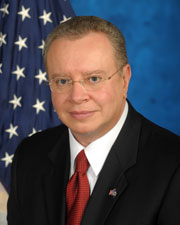
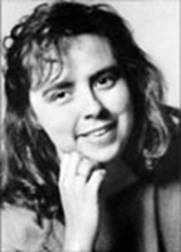
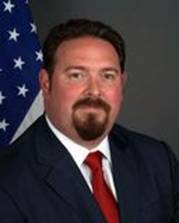
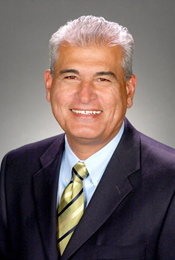
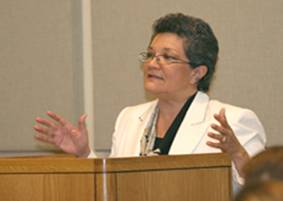

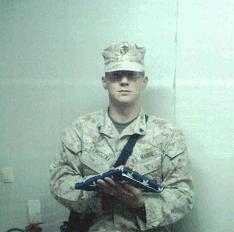
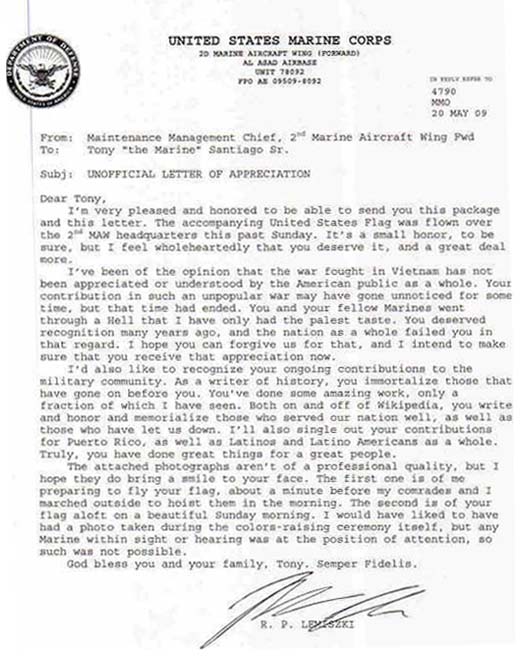

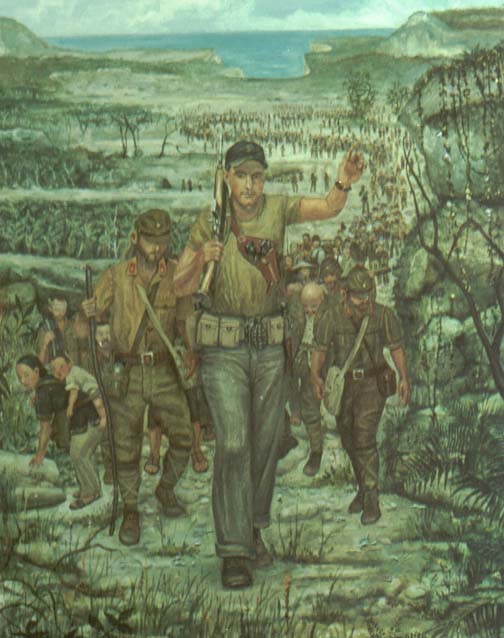
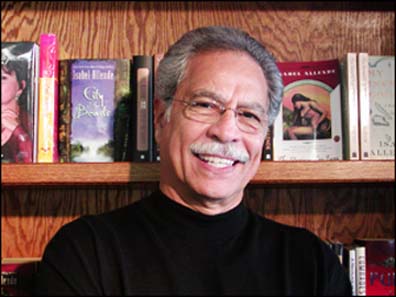 Martinez, the recipient of a MacArthur
Foundation Fellowship (familiarly referred to as a "genius
grant") in 2004, is the owner of Santa Ana's Libreria Martinez Books
and Art Gallery. He's also been a speaker at hundreds of events at
schools, nonprofits and conferences throughout the world, and is known as
a champion of literacy, especially in the Latino community.
Martinez, the recipient of a MacArthur
Foundation Fellowship (familiarly referred to as a "genius
grant") in 2004, is the owner of Santa Ana's Libreria Martinez Books
and Art Gallery. He's also been a speaker at hundreds of events at
schools, nonprofits and conferences throughout the world, and is known as
a champion of literacy, especially in the Latino community.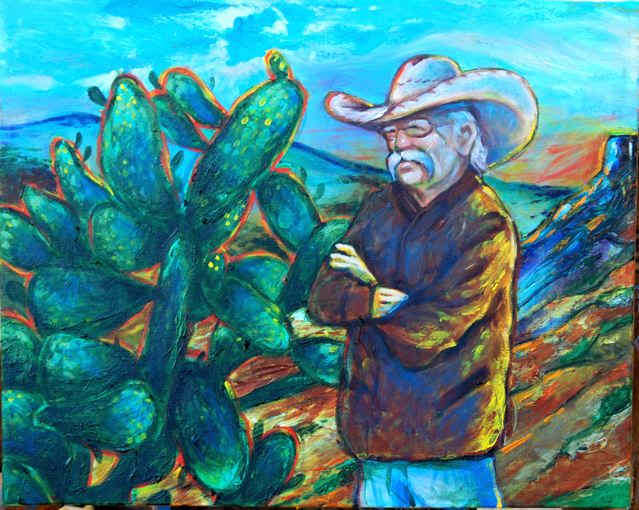
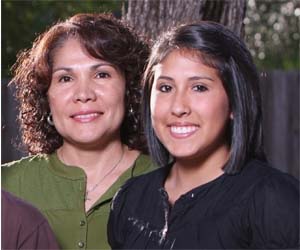 Latino
teens who actively embrace their native culture and whose
parents become more involved in U.S. culture develop healthier
behaviors, U.S. researchers say.
Latino
teens who actively embrace their native culture and whose
parents become more involved in U.S. culture develop healthier
behaviors, U.S. researchers say. 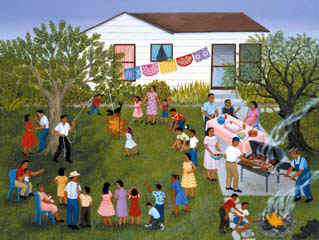 An
interactive exhibit inspired by the works of nationally acclaimed
artist Carmen Lomas Garza. How does your family celebrate special
occasions? What are your family's daily routines? Every child
inherits his or her own cultural identity through the everyday
routines and
An
interactive exhibit inspired by the works of nationally acclaimed
artist Carmen Lomas Garza. How does your family celebrate special
occasions? What are your family's daily routines? Every child
inherits his or her own cultural identity through the everyday
routines and 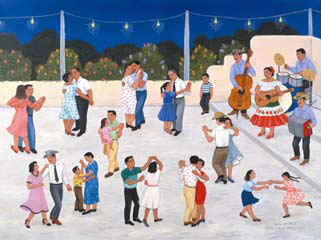 special
traditions of family life. Step into Carmen's world and explore
Mexican-American culture.
special
traditions of family life. Step into Carmen's world and explore
Mexican-American culture.

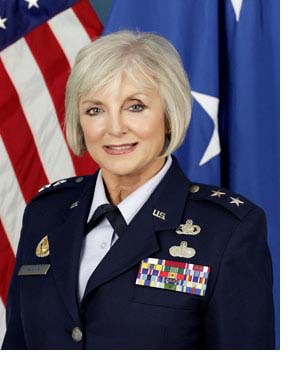 Major
General LaRita A. Aragon is the Air National Guard assistant to the
deputy chief of staff of Staff Manpower and Personnel. She serves as
the senior Air National Guard officer responsible for comprehensive
plans and policies covering all life cycles of military and civilian
personnel management, which includes military and civilian end
strength management, education and training, and compensation and
resource allocation. General Aragon serves on the Air Force Personnel
Board of Directors for personnel integration matters.
Major
General LaRita A. Aragon is the Air National Guard assistant to the
deputy chief of staff of Staff Manpower and Personnel. She serves as
the senior Air National Guard officer responsible for comprehensive
plans and policies covering all life cycles of military and civilian
personnel management, which includes military and civilian end
strength management, education and training, and compensation and
resource allocation. General Aragon serves on the Air Force Personnel
Board of Directors for personnel integration matters.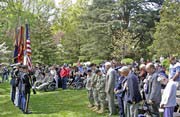

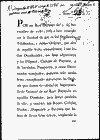


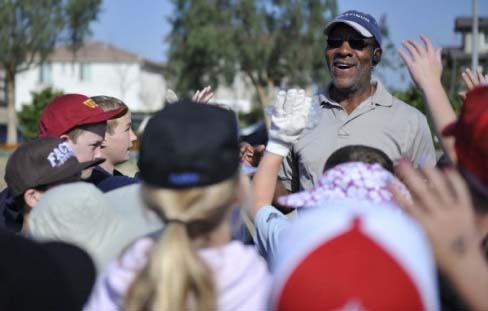
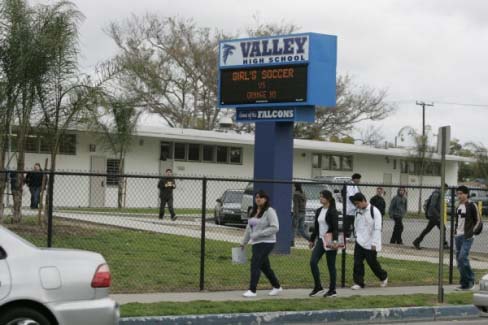 I
I

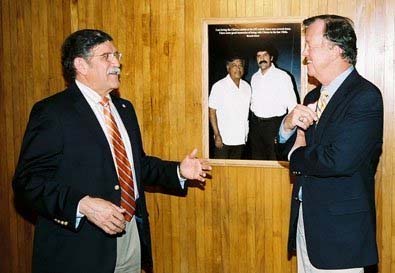

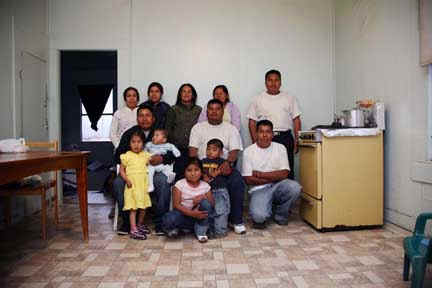

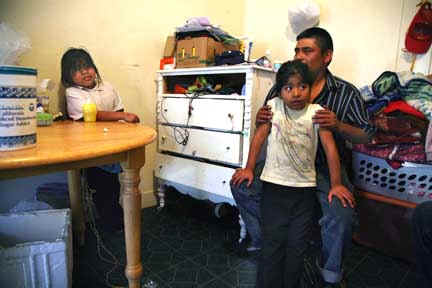
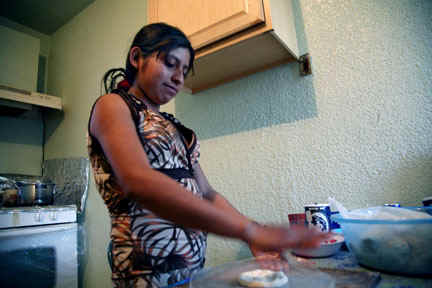
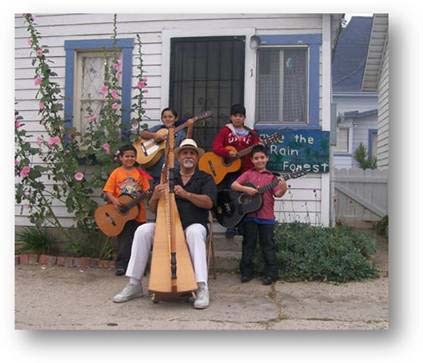 Saturday,
July 18th ~ Main Street in historic Downtown
Santa Paula
Saturday,
July 18th ~ Main Street in historic Downtown
Santa Paula


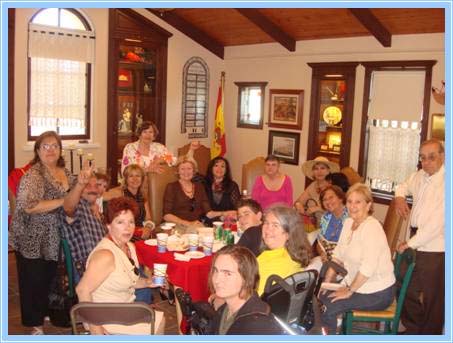
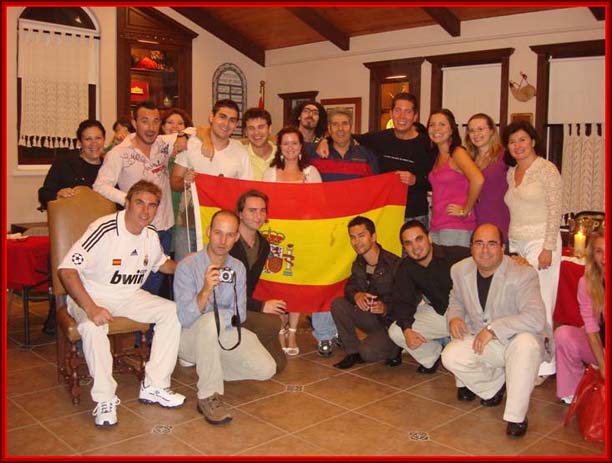
 voices!
In a close vote, the committee voted 6 to 4 to
eliminate General Fund support to the state parks,
replacing it with a State Parks Access Pass, funded by
a $15 surcharge on vehicle license fees. The
State Parks Access Pass, originally proposed last year
by our own then-Assemblymember John Laird, is a
long-term solution that would keep our parks open.
However, there's a very long way to go before a final
budget is adopted and anything can happen in the
twists and turns of budget negotiations.
voices!
In a close vote, the committee voted 6 to 4 to
eliminate General Fund support to the state parks,
replacing it with a State Parks Access Pass, funded by
a $15 surcharge on vehicle license fees. The
State Parks Access Pass, originally proposed last year
by our own then-Assemblymember John Laird, is a
long-term solution that would keep our parks open.
However, there's a very long way to go before a final
budget is adopted and anything can happen in the
twists and turns of budget negotiations. 
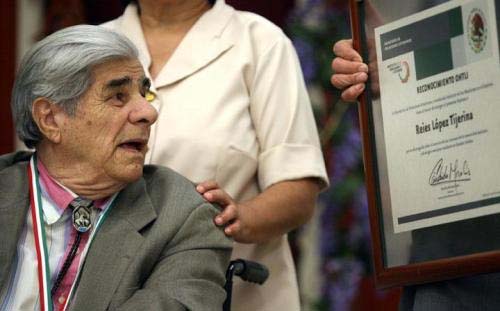
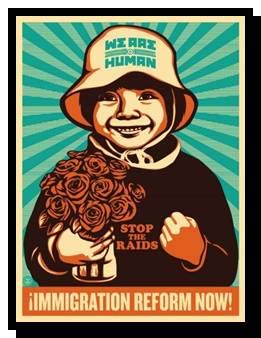
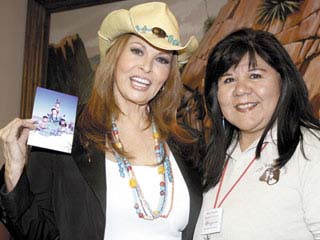
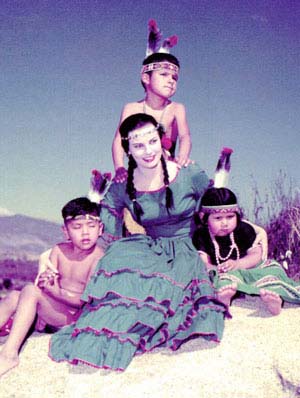
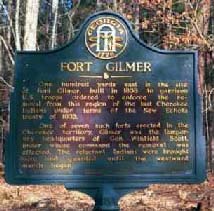
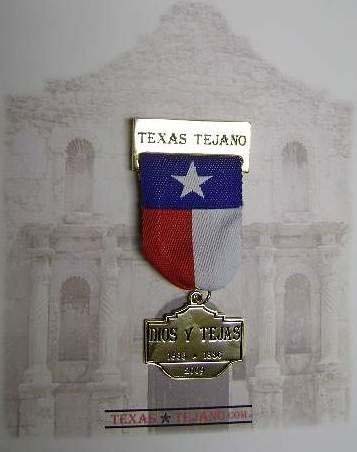

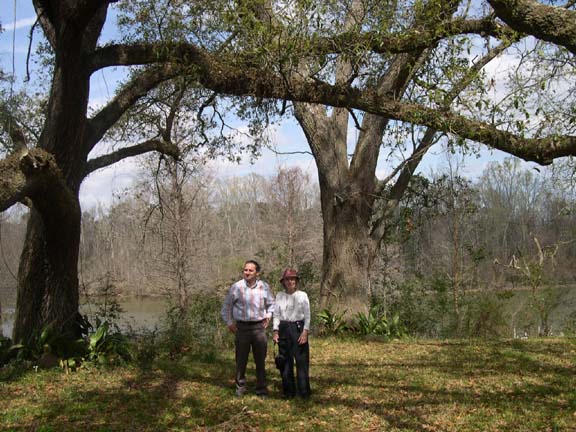
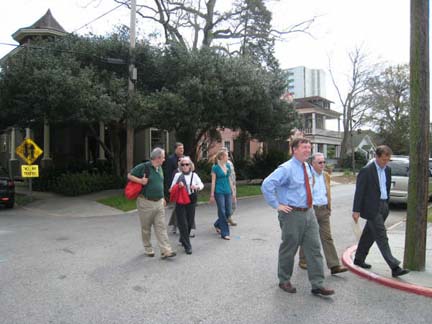
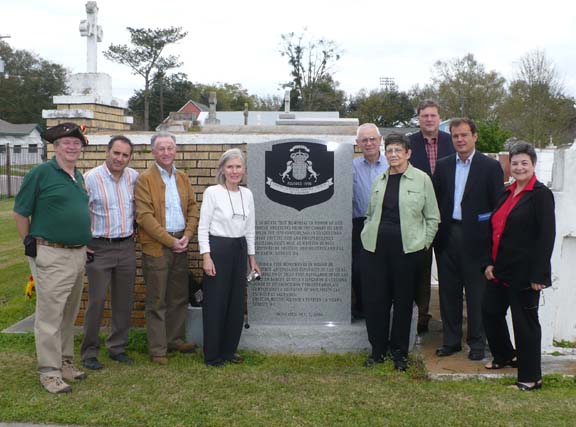
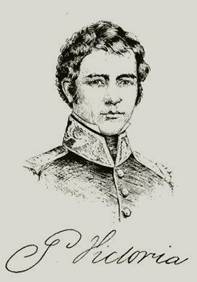
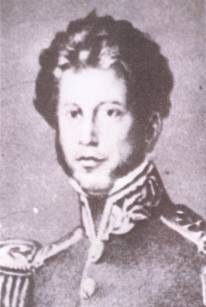
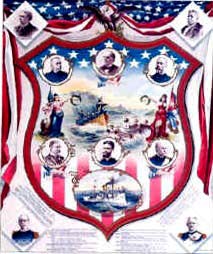 Is has been said somewhere that "There
has never been a good WAR or a bad PEACE." War is a
horrible human experience, disrupting world harmony and taking
the lives of young men and women before their time. The
United States of America was conceived in revolution, tested
in a great civil war, and tempered through its westward
expansion by armed conflict. Perhaps Thomas Jefferson
best summarized the inevitability of war, as well as its
desired outcome, in his letter to William Smith in 1787 when
he wrote:
Is has been said somewhere that "There
has never been a good WAR or a bad PEACE." War is a
horrible human experience, disrupting world harmony and taking
the lives of young men and women before their time. The
United States of America was conceived in revolution, tested
in a great civil war, and tempered through its westward
expansion by armed conflict. Perhaps Thomas Jefferson
best summarized the inevitability of war, as well as its
desired outcome, in his letter to William Smith in 1787 when
he wrote: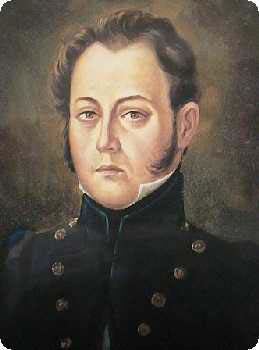 Para
comprender mejor el contenido de esta web, se pueden leer los
siguientes artículos:
Para
comprender mejor el contenido de esta web, se pueden leer los
siguientes artículos: